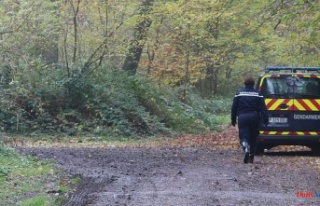Going green, moving into more spacious accommodation, rebuilding your life in the heart of a charming little town... Since the health crisis, the idea has germinated in the minds of more than one resident of the big cities. urban centres, confined to small spaces and in need of nature. But from dream to decision, how many take the plunge? If the phenomenon is difficult to measure, the real estate market gives some signals. The number of transactions in intramural Paris, for example, is now surprisingly stable, and the same is true in other large cities such as Lyon or Toulouse.
"There is indeed a new behavior that has emerged for a little over a year, indicates Frédéric Violeau, notary in Caen and member of the Higher Council of Notaries. We are meeting buyers of a new kind, as if a trend hitherto there underlying had been brought to light by the effect of the health crisis. On the other hand, we are not able to say if the phenomenon will be perennial. Not yet enough to cry out about the urban exodus, of course, but some signals are converging.
"In a number of medium-sized cities that are well connected to metropolises, real estate pressure is now greater today. This is a change. Since the beginning of the 2000s and until three years ago, these medium-sized cities seemed to be losing momentum", observes Jean-Claude Driant, professor at the Paris School of Urban Planning. This is particularly the case in Ile-de-France, where old houses to be renovated find takers in the rural parts of Seine-et-Marne, Yvelines and Essonne, but not only. According to INSEE, the population of certain territories has increased significantly since deconfinement, with a bonus for departments located near Paris (Eure, Eure-et-Loir, Loire, Orne, Yonne, etc.) and along the coasts ( Vendee, Morbihan, Charente-Maritime, Var). Better still: we observe a similar movement in rural areas such as Lot, HauteLoire or Ardèche.
Gone are the days of second homes in the classic sense. Make way for a new logic, that of "bi-residences", or "bis" main residences: a second accommodation where you telework a few days of the week, while keeping a main pied-à-terre in town. Provided, of course, that you have the possibility of carrying out your professional activities remotely and have a sufficient budget...
While these trends are fairly recent, certain much older phenomena persist and are intertwined with them. Many Parisian families, faced with housing that has become financially inaccessible in the capital, continue to leave for the suburbs. This helps to drive up prices in historically working-class municipalities and pushes low-income households ever further... "This movement towards the outskirts has existed for at least 25 years and continues, analyzes Jean-Claude Driant. However, it has undoubtedly accelerated with the health crisis, which has accentuated the need for greenery and space. Still others leave Ile-de-France altogether for other cities such as Nantes, Bordeaux or Rennes. Knowing that, here too, the movement is not new and owes a lot to the TGV.
If these dynamics will still have to be confirmed in future censuses, the French do indeed seem to be on the move, according to opinion polls. “In the summer of 2021, 19% of French people said they wanted to move,” notes Rémy Oudghiri, director of Sociovision, a subsidiary of the Ifop group. With, unsurprisingly, an over-representation of inhabitants of metropolises of more than 100,000 inhabitants and of Ile-de-France residents. A particularly sensitive phenomenon among 25-34 year olds, especially among women... "We feel that there is in this category of the population a desire to move, to change jobs, to get closer to nature", analyzes this specialist in deciphering changes in society and consumption.
What explanation can be given for this appetite of young working people for a transformation of their living environment? "Age of course plays a major role. It's a period when you build yourself up, when you don't have children yet, when you're not yet sure of your professional path. , where we are still in a period of transition", advances Rémy Oudghiri. But there is something else: this new generation is concerned about well-being and concerned about climate change. "This desire to settle in a smaller town, or even, for some, to move closer to rural areas, also meets the need to find an environment more conducive to health", continues this opinion specialist. In addition, young people want to balance their personal and professional lives more. Hence the desire to find a place where, they think, the pressure will be less, especially in terms of transport.
This is all the more true since, since Covid-19, those who are lucky enough to be able to telecommute have realized that they have the possibility of changing their living environment while preserving their job. But beware of miscalculations! Certainly, leaving the metropolises, one generally realizes a great saving on his accommodation. On the other hand, once installed in the countryside or in a small town, the car often becomes essential. However, this has a cost that is often overlooked. For lack of sufficient income, the dream thus risks remaining... a dream, for several years.
There are other limits to these desires, moreover. If one finds in the small towns and the countryside of France cheaper housing, a greater proximity to nature and a different quality of life, it is however not so easy to land such an interesting job, a fortiori when one is the “following” spouse. "You should also know that wages are often on average lower than in big cities," said Achille Warnant, a doctoral student in geography at the Ecole des Hautes Etudes en Sciences Sociales. Suffice to say that, if a certain territorial rebalancing is possible, the metropolises still have a future...

![[Living environment] Desires elsewhere: from dream to reality](https://www.dailynewsen.com/images/haberler/2022/07/_b5845.png)










